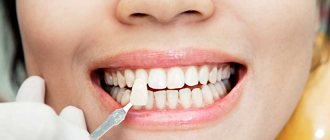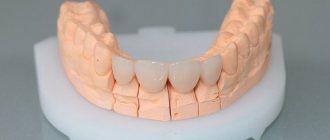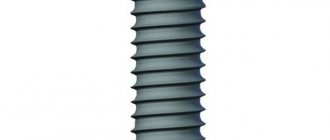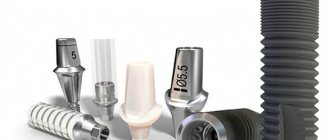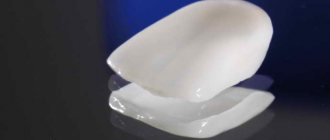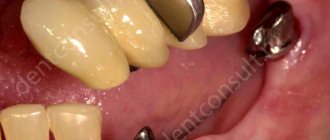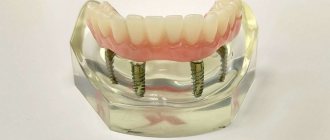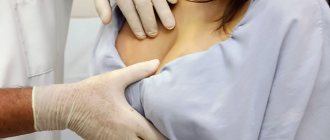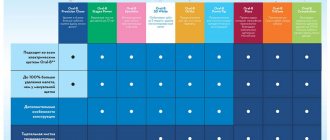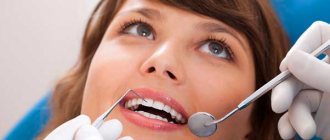20.11.2019
From January 1, 2020, in accordance with Federal Law 61-FZ “On the circulation of medicines” as amended on December 28, 2017, all participants in the circulation of medicines for medical use in the production, import into the Russian Federation, dispensing, sale, transfer, use and destruction of medicines drugs are required to enter information into the FSIS MDLP.
The procedure for connecting to the system for monitoring the movement of drugs for medical use is described on the “Labelling of drugs” of the website HonestZNAK.RF .
The new year 2020 is approaching and with it new rules and responsibilities.
One of the new responsibilities of every organization that uses drugs will necessarily need to reflect the disposal of drugs.
I studied this issue because a dental clinic approached us with a request to help them understand this issue. We work with them to support the 1C program and set up the online cash register.
Naturally, the question arose whether dentistry needs to use an online cash register for the disposal of medications, similar to a pharmacy. So, the answer to this question is that there is no need to use an online cash register if medications are used for treatment.
If a dentist has a kiosk that sells retail medications for patients, then only in this case you need to use an online cash register, just like pharmacies.
Below is a rationale for why this is so. And I will also do a short review of the 1C program, designed to interact with the state control system for labeled medicines.
We often help our users understand legal requirements and automate these requirements.
Useful links and how marking works
Let's start with the fact that all medical institutions will have to dispose of medications. Of course, if you have medications.
A dental clinic is a medical institution providing specialized medical care.
Moreover, no matter how many employees you have, you are required to enter information into the labeling system. I clarified this information with the Honest Sign support service, if you want, I will forward the answer.
A few dry facts about legislation.
All legislation on this issue can be read on the Roszdravnadzor website, but I would like to draw your attention to the information letter dated May 20, 2019 No. 01I-1269/19
“On connecting medical organizations and pharmacies to the information system for monitoring the movement of medicines”
Link to the letter https://roszdravnadzor.ru/i/upload/images/2019/5/21/1558438294.30618-1-22754.pdf
From this letter it follows that if you “intend to carry out the circulation of medicinal products for medical use, before January 1, 2020, you are required to register in the system for monitoring the movement of medicinal products for medical use and have a personal account of the subject of circulation of medicinal products in order to enter information about medicinal products drugs into the monitoring system."
Another regulatory document that establishes the procedure for state supervision is Federal Law of April 12, 2010 No. 61-FZ “On the Circulation of Medicines.” It is the same law that establishes the rules for labeling medicines. Of course, for a complete picture, you can study the “other regulatory legal acts” of the Russian Federation adopted in accordance with it. Or simply find out what is required of you and try to fulfill these requirements.
The use of this system was ordered by the President, so it is expected that the use of this MDLP system - monitoring and movement of drugs - will be strictly controlled.
In the same letter you can read a reminder about fines for failure to comply with requirements.
Excerpt from the text
Analysis of the given list of sterile dosage forms that require aseptic production conditions shows their practical irreplaceability. Their loss of sterility can radically worsen their basic medicinal properties. Of great importance in organizing the production of the listed dosage forms, namely achieving the necessary sterility, lies in GMP requirements.
The practical significance of this thesis is that modern industry produces a large assortment of ointments that include medicinal substances of various pharmacological groups as active components. A wide range of excipients are used for their production. The range of ointment bases is constantly expanding, and they are being studied from the point of view of biopharmacy. The equipment used in production is constantly being improved, and new methods for standardizing and assessing the quality of ointments are being developed, taking into account their rheological properties.
liquid dosage form. Let's consider their chemical properties depending on the functional groups that make up the molecule of these substances.
For many years, only options for changing the dosage of medications depending on the age of the child were presented to help him. In this regard, the problem of creating drugs for children is one of the most pressing and complex; its pharmaceutical aspects are limited not only by quantitative characteristics (dosing), but also by qualitative indicators (dosage form, technology, etc.), Therefore, the purpose of this work is to determine provisions of children's dosage forms in pharmaceutical production and their biopharmaceutical evaluation.
Soft dosage forms such as ointments, liniments, pastes and suppositories are the most optimal dosage form, which can combine components that differ in chemical nature, state of aggregation, purpose, and biological activity. This is explained by the fact that in a viscous medium, physicochemical processes (hydrolysis, oxidation, etc.) proceed much more slowly. To all of the above, we can add that modern cream, ointment and gel bases allow the release of active substances within 16-18 hours. This ensures high efficiency and minimal frequency of use, and therefore safety, ease of use and use. All of the above determines the popularity of these dosage forms.
Innovation in the development of new drugs and new drug delivery systems has reached a very high level. Due to the high requirements for pharmaceutical products, packaging for medicines must ensure that the quality of medicines is maintained during transportation, which will increase their shelf life.
In this regard, knowledge of theoretical material in this area and the ability to apply it in practice is an important and relevant goal, both for this course work and for the work of a pharmacist-analyst in general.
Tablets as a dosage form were included in the Swedish Pharmacopoeia in 1901. Currently, tablets have found a wide distribution form and are used as a dosage form for many drugs. Of the total number of factory-produced finished medicines dispensed from pharmacies, up to
accounts for the share of tablets.(4,6,9)
With the simultaneous introduction of medicinal substances into the patient’s body in the form of LF, a set concentration is formed in the blood and tissues, which transforms over time depending on absorption, distribution of biotransformation (metabolism) and elimination (excretion), which is due to the duration of stay of medicinal substances in the body and depends on the period of its biological has left the biological systems of the body, it is different (on average 2-5 hours), so it is necessary to administer medicinal substances several times during the day. In this regard, prolonged-release drugs are used, which release a dose of the medicinal substance constantly over a set period, so thereby maintaining its optimal level in the body and eliminating unnecessary increases and decreases
When setting up a pharmaceutical enterprise, documentation must be carefully designed, compiled, verified, approved and distributed. It must comply with the relevant regulations for the production and wholesale distribution of finished products.
The purpose of our research is powders as a dosage form and their production in a pharmacy. The object of the study is powders varnish dosage form. Study the features of powders as dosage forms.
Among the inflammatory processes of the eyes, conjunctivitis accounts for the most part - 66.8%, and although keratitis accounts for no more than 5%, this form of eye disease is considered the most dangerous for visual impairment and blindness. Bacterial corneal ulcer accounts for 27.5% as a primary and 30.3% as a secondary infection of the cornea. [Therefore, dosage forms used in ophthalmology are playing an increasingly important role.
About fines
Fines are described in the Code of Administrative Offenses in Article 15.12 in paragraph 2:
Sale of goods and products without marking and (or) application of information provided for by the legislation of the Russian Federation, if such marking and (or) application of such information is mandatory, as well as storage, transportation or acquisition of such goods and products for sales purposes, with the exception of products specified in part 4 (this is about the circulation of alcoholic beverages and tobacco products) of this article -
shall entail the imposition of an administrative fine on citizens in the amount of two thousand to four thousand rubles with confiscation of the items of the administrative offense; for officials - from five thousand to ten thousand rubles with confiscation of the items of the administrative offense; for legal entities - from fifty thousand to three hundred thousand rubles with confiscation of the items of the administrative offense.
Once we have decided on the need to participate in the drug labeling system, we will move on to practice.
About registration on the website honestznak.rf
Fines and obligations are always unpleasant, but there is also good news and it is that if you have a small turnover of drugs, then you can process disposal completely free of charge. And you can do this directly in the “Honest Sign” system, which is located on the website Honest Sign.rf.
This website contains complete information about labeling and there you can register in your personal account. Moreover, this needs to be done in 2020.
Registration is free, only a qualified electronic digital signature is required for registration.
Most organizations already have such a signature and use it to submit reports and was previously used to sign an agreement with the OFD for online cash registers.
Let me remind you that since you use medications for treatment and do not sell them, you do not need to order medications through the online cash register. You will only need to order medications through an online cash register if you have a pharmacy kiosk.
Instead of an online cash register, you will need to create a document justifying the withdrawal of the withdrawal registration from circulation. This may be a demand invoice, a write-off act when used to provide medical care, or any other document in accordance with the internal accounting policy of the participant in the turnover.
And according to this document, it will be necessary to read the marking codes from the indicated packages being written off and enter them into the MDLP system. MDLP stands for “drug movement labeling.”
You can enter the codes of disposed drugs into the MDLP system either manually or using a special device called a disposal registrar.
The use of polymer materials in modern dentistry
The achievements and discoveries of chemical science have firmly established themselves in all sectors of human life. One of the most important capabilities of chemistry is the polymerization and polycondensation of compounds, which, in turn, are methods for producing polymers. Polymers are high-molecular compounds consisting of a large number of units (monomers) linked together by chemical bonds. The term was first used by Swedish chemist Jens Berzelius in 1833. Unique polymer compounds are the basis of plastics, chemical fibers, rubber, paints and adhesives. However, in addition to their industrial importance, polymers are also widely used in medicine, in particular in dentistry. Our work will be devoted to this topic.
It was in dentistry that the spread of polymers developed earlier than in other branches of medicine. After a method was found for vulcanizing rubber by introducing sulfur and a method for its use in orthopedic dentistry for the manufacture of removable denture bases, polymer materials became indispensable for the manufacture of dentures of this type. The base is the main element of a removable denture. However, more than a hundred years of practice in using rubber as the main polymer material have revealed all its disadvantages, the main of which is the porosity of rubber. It absorbs food debris, which leads to an unpleasant odor and contamination of the prosthesis. Rubber also contains mercury and sulfur. The fact is that after vulcanization of rubber, these substances can remain in its composition in a free form, and this can already have a toxic effect on the body and cause chemical poisoning. In addition, the color of the rubber does not match the color of the oral mucosa and stands out sharply against its background. So, the above-mentioned disadvantages of rubber lead us to the main conclusion: the polymer base material of a denture must have a number of characteristic properties:
- be biocompatible with the human body, otherwise rejection will occur;
- easy to clean and meet hygiene requirements;
- be resistant to the accumulation of bacteria on its surface;
- have a low density to ensure the lightness of the prosthesis in the mouth;
- be resistant to load, that is, be strong enough not to deform;
- have thermal conductivity;
- satisfy aesthetic requirements;
- have high quality and low price.
Taking into account all these characteristics, experts have found a replacement for rubber. Acrylic plastics, a polymer based on methacrylic acid, became it. These materials turned out to be much more hygienic and practical than rubber, and also met all the requirements for base materials.
Plastic is obtained from acetone by treating it with hydrocyanic acid or its salts, and then with methyl alcohol or methyl ester of acids. The manufacture of removable denture bases occurs by mixing liquid methyl methacrylate - monomer and powder - polymer in certain proportions. In addition, benzoyl peroxide (0.5-0.6%) and filler - zinc oxide (1.35%) are added to the powder, which make the plastic transparent. The result is a plastic mass that is easily formed and then polymerized. Polymerization of plastic is carried out in water baths at a temperature of 100° for 30-40 minutes. When polymerizing plastic, it is necessary to slowly increase the temperature and slowly cool the vessel, otherwise the finished prosthesis base will turn out to be inelastic and porous. So, we have obtained polymethyl methacrylate - a polymer material for the basis of a denture. Comparing its properties with the above-mentioned requirements for base materials, it should be noted that this polymer has many advantages. It is hygienic, has no pores, is easy to process, and artificial teeth are firmly connected to it. However, there are also disadvantages: low levels of strength and elasticity. In addition to the manufacture of denture bases, acrylic plastics are used to reproduce the relief of soft tissues on cast metal frames, for the reconstruction of dentures, as well as for the manufacture of soft linings for the bases of removable dentures and artificial teeth.
We looked at one type of polymer materials used in orthodontics - acrylates. Let us now turn to the therapeutic branch of dentistry. Here, the second type of polymers is used as the main working material - composites, which are the basis for the creation of polymer composite materials. The composite material itself is a filling mass for the correction and restoration of the damaged part of the tooth. In the literature you can find information about the use of lead as a filling material in the first century AD. There is an assumption that the term “filling” comes from the Latin name for lead - “plumbum”. Throughout the history of the use of composite polymer materials in dentistry, metals have been used as filling materials, since they have plasticity, that is, the ability to fill the tooth cavity, deforming plastically, and thereby taking the desired shape. However, metals and alloys were not able to recreate the appearance of a natural tooth, so composite materials, in which this drawback was eliminated, are now produced chemically through polymerization. So, a composite material in modern dentistry is a multicomponent filling material consisting of a matrix, an inorganic filler and other additional components and is intended to restore the anatomical integrity of the tooth. Let's try to figure out what the main components of composite materials are and how they interact with each other.
The organic matrix is the framework in which the remaining components are located, represented by hydrophobic methacrylates (organic molecules of different types, sizes and weights). Inorganic filler is silanized particles of inorganic substances of various types and sizes, evenly distributed in the matrix. The filler is silicon dioxide, and the particles are salts of various metals. Obviously, to obtain the composite material itself, these components must be mixed. However, it must be taken into account that there is a possibility of their interaction and polymerization under the influence of natural light. Then stabilizers come to the rescue and prevent these processes. Stabilizers are represented by hydroquinone methyl ether or hydroxytoluene and determine the shelf life of the material itself.
Since the composite material is a chemical “replacement” of living tissue and is intended for long and durable contact with the tooth, a number of requirements are imposed on it. Here are the main ones:
- versatility, convenience and ease of use
- load resistance
- biocompatibility with the body - no irritation of the pulp and oral mucosa
- closeness to the physical and aesthetic properties of tooth tissue
- insolubility in oral fluid
- long shelf life
- no harmful effects on the patient and doctor
- affordable price
The toxicity of the material to the dental pulp and to the entire oral cavity depends on the quality of the material, the conditions and periods of its storage, as well as on the correct polymerization. The fact is that no material is capable of polymerizing 100%, that is, there is always a free monomer remaining, and the biological properties of composite materials are largely determined by the amount of residual monomer, the permissible level of which according to the standard is 12. All modern composite materials after polymerization non-toxic.
Another important factor in the use of the material is the speed of working with it and ease of use for the doctor himself. Composite filling material is easy to introduce into a carious cavity, distribute and model. The speed of working with composite materials depends on the maximum layer thickness and its polymerization time. That is, it is more profitable to use those materials in which a thicker layer polymerizes in less time.
In our work, we examined two types of polymer materials - acrylic plastics and composites, which are currently leading in orthodontics and therapeutic dentistry. It is important to note that the use of these polymers has an unlimited age range: a dentist can use these polymer materials to treat and restore teeth of people of completely different ages.
Of course, one cannot fail to mention the enormous importance of the use of polymers in such a branch of medicine as dentistry. The dental cavity requires careful and regular care and prevention, but even if you constantly maintain its integrity by observing the rules of hygiene, the risk of tooth decay, especially with age, is very high. Polymers have allowed dentistry to work real miracles: even hopelessly destroyed or severely damaged teeth can be restored thanks to polymer materials. Of course, the closer a material is to living tissue in its physical and aesthetic properties, the more expensive it is; but medicine does not stand still and is discovering more and more new, convenient and affordable ways to replace living tissue with chemical tissue. Perhaps in the near future, polymer materials will find even wider use not only in dentistry, but also in other branches of medicine, and then, due to their prevalence, they will become available to everyone.
Literature:
- Iordanishvili A.K. Clinical orthopedic dentistry, M.: “MEDpress inform” 2007 - 248 p.
- Poyurovskaya I.Ya. “Dental materials science”, textbook. –– Geotar Medicine, 2007
- Richard Van Noort “Fundamentals of Dental Materials Science” - 304p.
- https://otherreferats.allbest.ru/chemistry/00270564_0.html
- https://xreferat.com/55/5395-1-primenenie-sovremennyh-stomatologicheskih-termoplasticheskih-materialov-v-praktike-ortopedicheskoiy-stomatologii.html
- https://vmede.org/sait/?page=13&id=Stomatologiya_poyrovskaya_2007&menu=Stomatologiya_poyrovskaya_2007
- https://nsportal.ru/ap/library/drugoe/2011/10/04/polimery-v-nashey-zhizni
- https://www.myshared.ru/slide/673114/
- https://allrefs.net/c52/4bryt/p86/
- https://dentaltechnic.info/index.php/obshie-voprosy/ortopedicheskayastomatologiya/671-osnovnye_elementy_s_emnyh_protezov
- https://dentaltechnic.info/index.php/obshie-voprosy/osnovystomatologicheskogomaterialovedeniya/1301-polimernye_materialy_dlya_bazisov_s_emnyh_zubnyh_protezov
- https://meduniver.com/Medical/stomatologia/443.html
- https://files.school-collection.edu.ru/dlrstore/4ee22d2b-8dcc-9308-877a-53118dc6979e/1012459A.htm
- https://www.bsmu.by/downloads/kafedri/k_1_terstom/komposit.pdf
Disposal recorder
Right now, for information, if you haven’t heard about the disposal recorder, it is a special device similar to a remote control for a TV or an old model of a mobile phone. The disposal recorder contains the function of a barcode scanner and information transmitter into the Honest Sign system, this is the very site where information on drug labeling is collected. Information can be transferred directly or through a computer program, for example the 1C program.
By the way, the disposal recorder is issued to all participants in the circulation of medicinal products free of charge. At first it was issued only to those involved in the circulation of drugs for high-cost nosologies, and then they began to issue it to everyone.
To receive a disposal registrar for free, you need to go to your personal account on the website honestznak.rf and in the documents section find the agreement and application form. The disposal registrar is issued one at a time to one medical institution address and cannot be purchased. At the moment it is issued by a special organization MDLP operator and there is no other way to purchase a disposal registrar.
Disposal registrar or online cash desk for dentistry
If a dental medical institution has its own pharmacy kiosk that sells medicines at retail, then a cash register complete with a barcode scanner is required, as for any pharmacy. Each buyer will need to be issued a receipt, and information about the sale should be sent to the MDLP IS. For small dentistry, compact models of online cash registers - smart terminals -
, the functionality of which is more than enough to automate business processes.
For large dental centers, it is better to choose a full-fledged POS system
that includes a printer with high-speed receipt printing.
If medications are used only for the treatment of patients, they can be written off directly through the Honest Sign personal account or through a special program. To record the fact that a medicine was dispensed for treatment or free of charge with a prescription, a disposal registrar
– a device that reads codes from goods and transmits data to the monitoring system. The registrar is issued by the MDLP IS operator free of charge upon application from a participant in the circulation of medicines.
Scheme of work for drug circulation participants
To see who needs to use online cash registers and in what cases, and in which case the disposal registrar, on the Roszdravnadzor website there is a very convenient diagram for participants in the circulation of medicines, from which you will find that to withdraw medicines from circulation you do not need an online cash register, but Need a disposal recorder.
Methods for withdrawing medicinal products from circulation by type of participants in circulation
Scheme of work from the Roszdrav website
https://www.roszdravnadzor.ru/i/upload/images/2019/10/28/1572247773.16038-1-8960.pdf
Below I provide a picture for medical institutions providing specialized care.
What else is needed to register an honest sign in your personal account?
To register in the MDLP information system, you need to do preparatory work.
Almost everyone has an enhanced qualified electronic digital signature for the head of the organization. You use it when you send reports to the tax office or you could fill it out separately to sign the OFD agreement for the online cash register.
If you don’t have one, then you can contact us, we will select the most suitable option.
It is also important that a program called a cryptoprovider is installed on the computer. You can use one of two existing cryptoprovider programs - paid CryptoPro or free VipNet. Experience has shown that we need a crypto provider, CryptoPro. It is important that your digital signature was issued using this particular crypto provider. You can check this with the organization where you purchased your digital signature.
The next step is to start registering in your personal account at the address.
Here it is very important to follow the recommendations and carefully check that all the details of the qualified digital signature strictly match the data in your personal account.
Pay attention to the information in the license that you will see in your account. Be sure to check all the letters so that everything is correct.
Look carefully at the addresses of places of business.
All addresses are pulled from a special FIAS classifier.
And if suddenly you don’t find your address in the system, then be sure to write to FIAS so that your address is entered into the FIAS system. And then this correct address will be pulled into the MDLP system.
It would seem that what does the address have to do with it? Do you know such a Glonass system? This is a system for determining coordinates in geographic latitude and longitude.
The device you will use to dispose of medicines, the disposal recorder, is equipped with a Glonass module. And at least once a day, the device must exchange a signal with the Glonass system and synchronize its internal time with Glonass.
Speaking of the disposal registrar, it does not support scanning barcodes upon receipt, so if you need to receive medications, you will need to purchase a 2D barcode scanner to read the marking sign.
Why use the 1C program for drug labeling?
Yes, of course, you can register the receipt and disposal of medications manually in your personal account. Gradually get used to this routine work.
It will be a little difficult to check the situation when you are trying to “discard” a medicine that has already been written off. Get used to the fact that some strange words pop up when signing with an electronic digital signature. It will just take more time to complete these transactions.
If the turnover is more than 4 packages per day and you have “every hand” on the account, then we recommend connecting a special program to interact with the MDLP system for marking the movement of medicines.
At the moment, for small medical organizations there is a special program 1C:MDLP, which allows you to interact with the MDLP system as comfortably as possible. The cost of one workplace is 2500 rubles/month. Calculate for yourself how profitable this will be if you contrast it with:
- additional working time of the responsible employee,
- nerves and irritation when working with your personal account,
- showdowns with suppliers who care that you accept the invoice on time,
- difficulties when delegating work with the MDLP system.
I’m telling you this from personal experience of interacting with various personal accounts of government systems, no offense intended.
Another good news is that you can test the operation of the 1C:MDLP program completely free of charge for 30 days and decide how convenient it will be to interact with the system for your drug turnover volumes.
1C platform for labeling drugs in dentistry
You can transmit information about the disposal of medicines through your personal account on the Honest Sign website. To do this, a document is created that justifies the withdrawal of labeled products from circulation (invoice, write-off act, etc.) when providing medical care. In accordance with this document, marking codes are read from packages and entered into the MDLP system. This can be done manually or using the disposal recorder.
But this is a fairly routine and time-consuming procedure. A special program for interacting with MDLP will help optimize the preparation and sending of documents.
For small medical institutions, including dentistry, the most easy-to-use software has been developed - 1C:MDLP
. You can understand whether the application can cope with the volume of medicine turnover in a particular medical organization during a free trial period, which is provided for 30 days.
The program integrates with a disposal recorder and a 2D scanner. When working with 1C:MDLP on a scanner, you can save money: a full replacement is a service for reading codes installed on a smartphone. When you point the camera at the packaging, the application reads the QR code and automatically transfers the data to 1C:MDLP.
A large dental center would be more suited to the multifunctional clinic management program “BIT. Dentistry"
. Its functionality includes not only data exchange with MDLP, but also the generation of medical documents and reports, patient registration, the use of electronic medical records, warehouse accounting, control of material consumption, etc.
Contact CIO LLC - our specialists will help:
- choose a suitable program for working with markings,
- issue an electronic signature,
- connect document flow,
- select the necessary equipment.
Program "1C:MDLP"
The 1C:MDLP program is intended for organizations with a small turnover of medicines WITHOUT maintaining automated warehouse records.
According to the law, it is necessary to send information about the withdrawal of a medicine from circulation to the state system. For these purposes, a special program 1C:MDLP was created to facilitate data entry and processing.
Equipment usage:
you can connect to the program
disposal recorder
2D scanner or data acquisition terminal
when working in 1C:MDLP, instead of a 2D barcode scanner, you can use a free smartphone application, and this saves almost 7,000 rubles.
The disposal recorder can be connected to the 1C:MDLP program or directly to the MDLP system.
In this case, data will be loaded from the MDLP system into 1C. You can use a 2D scanner or data collection terminal to enter receipt data to read the marking code. Because the disposal recorder can only be used for disposal, and cannot be used for acceptance or transfer.
To start using you need
- constant Internet access
- qualified electronic digital signature for the head of the organization. Suitable signature for sending reports or electronic document management
- register in the "Honest Sign" system
- configure the 1C:MDLP program to get started
- connect a 2D barcode scanner to avoid wasting time typing the labeling code (27 digits) from the keyboard to scan medications or get ready to manually add medications for each package
- test work with the “Honest Sign” system, you must go through all possible actions in test mode. Recording all necessary actions in instructions and training the employee responsible for working with the labeling system. Training of personnel to work in the system if necessary.
- order and receive a disposal recorder
- connect the departure recorder to the program
- transition to working mode. You can switch to operating mode without the disposal recorder and enter data manually.
What can the 1C:MDLP program do?
Functional:
- setting up a connection with FSIS MDLP;
- work with documents;
- sending/receiving documents;
- storing and viewing exchange history;
- maintaining a log of operations with packages;
- maintaining a directory of drug nomenclature.
The following operations are supported:
- shipment and acceptance of goods;
- dismantling of transport packaging;
- internal movement of drugs;
- issuing goods according to a preferential prescription;
- transfer of medicines for destruction;
- distribution of goods for medical care.
